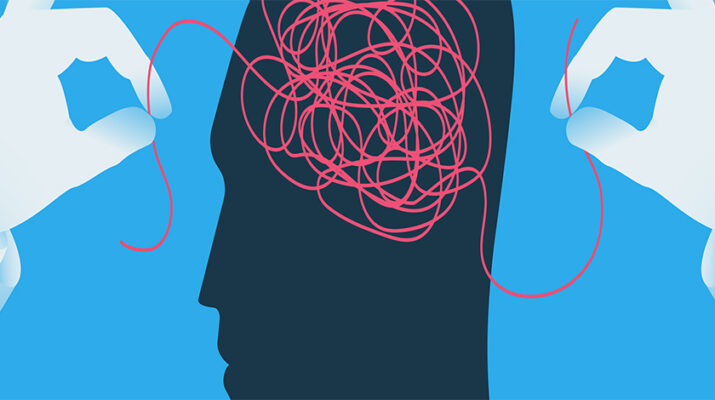What’s behind the seeming surge in mental illness?
By Barbara Pierce
One in 20 of US adults and 1 in 5 Americans aged 6-17 experience a mental health disorder each year, according to the National Alliance on Mental Illness.
It may seem the number is climbing higher than in previous decades. However, data from the New England Journal of Medicine indicates that the rate in 1990 is similar to current times. But is it really a matter of higher recognition rather than an increase in the rate of occurrence?
A rise in diagnoses also points to at least a small increase in openness about mental healthcare.
“Since the pandemic, rates of endorsed mental illness among the general population in the US are exponentially increasing and more of those people are seeking professional services,” said John Ringhisen, board certified psychiatric-mental health nurse practitioner at Upstate Medical University. “There has also been an explosion of awareness on social media that must be approached with caution in the age of misinformation and uninformed opinion being presented as truth.”
Ringhisen directs the Psychiatric Nurse Practitioner Fellowship at Upstate and the ADHD Clinic as well as serving as an adjunct professor at the Norton School of Medicine at SUNY Upstate Medical University.
During the pandemic, people began to give more attention to mental health problems. With work, travel and leisure activities halting, people had more time to look frankly at their mental health. Plus, people who already had mental health problems typically experienced an increase in severity and some people experienced onset of problems — and that’s still trending. Employment changes, a lack of interest in social interactions and the convenience of delivery services as isolative factors which can contribute to mental health problems. Limiting social interactions isn’t good for mental health.
“COVID-19 pandemic is believed to account for some of this change,” said Monique Winnett, Ph.D. and clinical psychologist at St. Joseph’s Health. “Increased access to global news and worries about society and politics can also contribute. In general, young adults aged 18-25 are most likely to report behavioral health concerns and women are more likely than men to report symptoms.”
Winnett also attributes the increase in mental health issues to greater screening by medical providers, who routinely assess mental health during visits. But Winett added that behavioral health symptoms remain underreported.
Physician Sutanaya Pal, assistant training director and assistant professor in the Department of Psychiatry and Behavioral Sciences and in the psychiatry residency program at Norton College of Medicine at SUNY Upstate Medical University, said that the rate of serious distress or impairment is much lower than 20%.
Some of the mental health issues reported relate to “problems with daily living, which people have reasonable reactions to,” she said. “There is a lot of economic strife and inequality. There’s a very reasonable reaction.”
This may lead to pathologizing a reasonable reaction that can be remedied with a few life changes.
Pal believes that limited access to normal family supports have increased mental health problems. When students attend a school far from home and settle there after graduation, they lose an entire community of support. The same goes for people who relocate for work or retirees who move out of state.
Pal also said that many young adults and adults are still dealing with issues carried over from adolescence.
“The rate is 50%,” she said. “They’ve grown up without a village. It’s an understandable reaction to a difficult situation.”
She encourages people struggling with mild to moderate, non-acute mental health issues to do things that support them, like interacting with their community, whether through common interest, religion, ethnic community or anything else.
“Find something you can connect with people on and use those to build community,” Pal said. “I am a psychiatrist by training and provide therapy at all ages. The point of therapy is to find out ways in which you can help yourself. Maintain your physical health and connections in any way you can.
“There’s always a role of medications, but that is challenging. They only fix so much. But if the distress is really bad, talk with your doctor about it. Most primary care providers are good at providing support and have a good idea of medications and prescribing. Most of the time, this can be handled on a very basic level. Do common sense things that help you feel well.”
Instead of comparing yourself with others, which can cause anxiety, it helps to focus on gratitude. Instead of ruminating on global stressors, think about what you can control to keep your life going well.
It’s also helpful to regularly engage in self care, reach out to friends or professionals for help as needed. Find fulfillment in helping others, as this helps turn the focus outward. Let go of past mistakes and give yourself grace for things that you cannot change.

